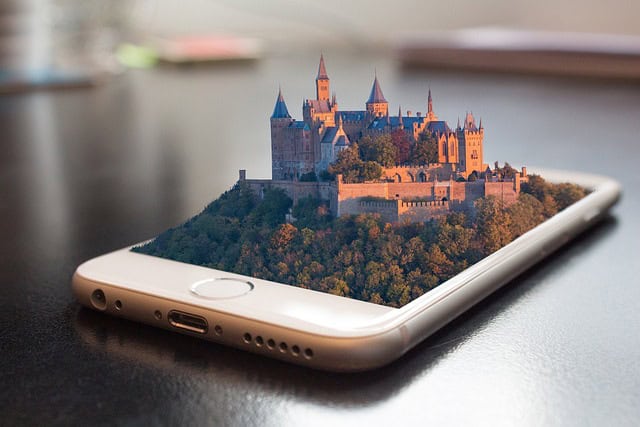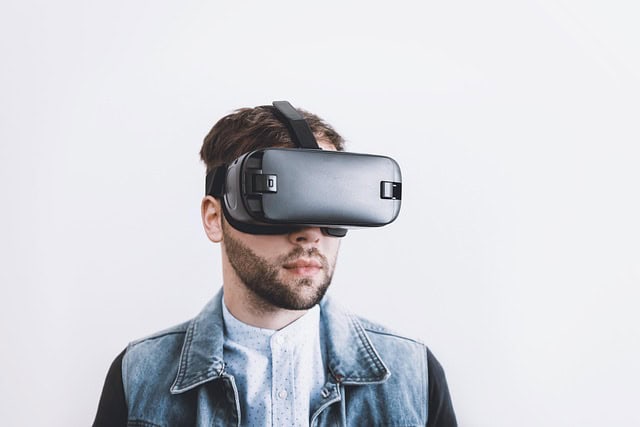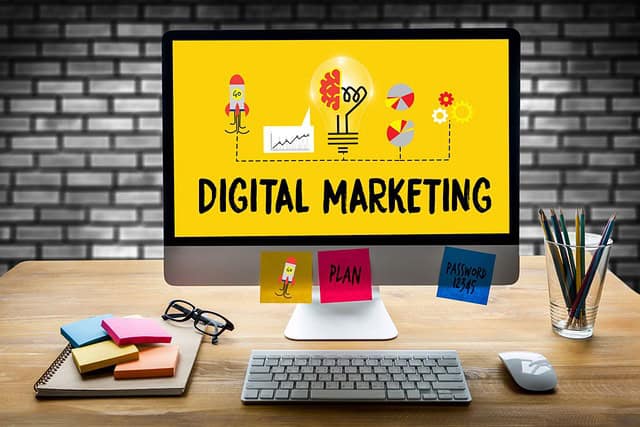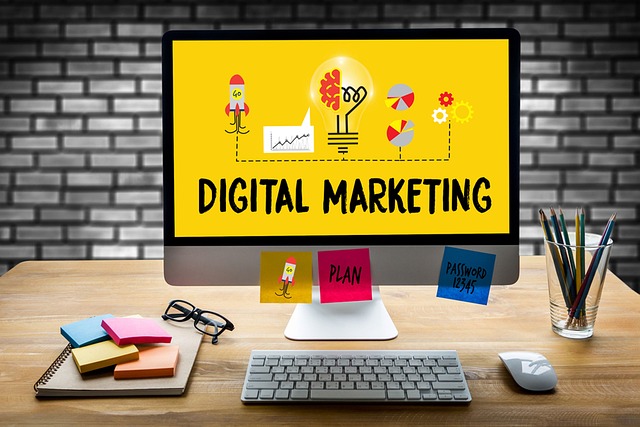-By: Bhavisha Changrani
In the evolving landscape of digital marketing, brands are continually searching for innovative ways to engage with consumers. Among the most exciting technological advancements are Augmented Reality (AR) and Virtual Reality (VR), both of which are significantly transforming the way businesses approach marketing. These immersive technologies allow brands to create interactive, memorable experiences that not only captivate audiences but also drive engagement, boost conversion rates, and enhance brand loyalty.

The Rise of AR and VR Technologies
Augmented Reality (AR) and Virtual Reality (VR) have gained considerable momentum in recent years, owing to their capacity to enhance real-world experiences and provide interactive, digital environments. While both technologies have distinct features, they share a common goal: to create experiences that blur the lines between the physical and digital worlds.
Augmented Reality (AR) overlays digital elements (such as images, sounds, or information) on top of the real world, typically through smartphones, tablets, or AR glasses. Unlike VR, which immerses users in entirely virtual environments, AR enhances their current surroundings by adding virtual components.
Virtual Reality (VR), on the other hand, completely immerses users in a digital environment, often using specialized equipment like VR headsets (Oculus Rift, HTC Vive, or PlayStation VR) that simulate physical presence in a virtual space.
Together, AR and VR are revolutionizing how brands interact with their audience, transforming traditional marketing methods into dynamic and interactive experiences.

Creating Immersive Experiences for Customers
In digital marketing, customer experience has become the focal point. Brands are increasingly relying on AR and VR to create unique, immersive environments where customers can engage with products and services in ways that were once unimaginable.
1. Virtual Product Trials
One of the most popular applications of AR and VR in marketing is the virtual product trial. Consumers can now test products virtually before making a purchase, offering a new layer of convenience and personalization to the shopping experience.
Virtual Try-Ons in Fashion and Beauty:
Brands in the fashion and beauty industries have embraced AR to allow customers to try on clothing, accessories, and makeup products virtually. For instance, Sephora’s Virtual Artist app uses AR to let users see how different makeup products will look on their faces without physically applying them. Similarly, clothing retailers like ASOS and Nike offer virtual fitting rooms, where customers can visualize how garments will fit and look on their bodies, saving time and improving their decision-making process.
Furniture and Home Décor: Furniture retailers like IKEA have adopted AR technology to offer virtual product trials. With their IKEA Place app, users can use their smartphones to visualize how pieces of furniture will look in their homes before purchasing. This capability helps customers feel more confident in their buying decisions, reducing the likelihood of returns and improving the overall customer experience.
2. Enhanced Customer Interactions
AR and VR also enable more interactive and personalized experiences that go beyond simple product trials. By integrating these technologies, brands can create experiences that not only showcase their products but also build stronger emotional connections with their audiences.
Branded Virtual Environments:
Companies are using VR to create fully immersive branded worlds. For instance, car manufacturers like Audi and BMW have developed VR showrooms, where customers can take a virtual test drive and experience the car’s features in an engaging, controlled environment. This not only makes the experience more exciting but also provides an opportunity to showcase the vehicle in ways that traditional showrooms cannot.
Interactive Advertisements:
AR is being used in advertising to engage consumers in new and exciting ways. A prime example is Coca-Cola’s AR campaigns, where users could scan a can of Coca-Cola using their mobile device and unlock interactive digital experiences, such as games or animations. This creates a sense of novelty and engagement that traditional static ads cannot achieve.

3. Event and Trade Show Experiences
For brands looking to leave a lasting impression at events or trade shows, AR and VR offer innovative ways to captivate attendees. Traditional booths can be enhanced with virtual elements that showcase products in new ways or provide additional information without overwhelming visitors.
VR-Based Brand Experiences:
Brands like Samsung and Ford have used VR to provide immersive experiences at events and trade shows. Ford, for example, created a VR experience where attendees could virtually “test-drive” their latest car models, simulating different driving environments and showcasing the vehicle’s features in a fully immersive digital space. This type of experience helps potential customers interact with the brand in a memorable way that goes beyond standard demonstrations.
AR for Product Demonstrations:
AR can be utilized at events to create interactive product demos. For instance, companies can place AR markers on their product displays, allowing attendees to use their smartphones to unlock additional information, view product features, or even interact with virtual versions of the products.
Benefits of AR and VR in Digital Marketing
1. Increased Engagement and Interaction
AR and VR capture users’ attention in ways traditional advertising methods cannot. These technologies engage multiple senses (sight, sound, touch) and encourage active participation, leading to longer interactions and stronger emotional connections. By creating interactive and memorable experiences, brands can increase the likelihood of consumers returning for more.
2. Improved Customer Decision-Making
One of the primary advantages of using AR and VR in marketing is their ability to help consumers make more informed purchasing decisions. Virtual product trials allow customers to visualize how a product will fit into their lives, reducing uncertainty and boosting confidence. This can lead to fewer returns and higher satisfaction rates.
3. Enhanced Brand Perception and Loyalty
Brands that use AR and VR creatively often gain recognition for their innovative approach to customer engagement. These technologies show that a brand is forward-thinking and invested in providing its customers with a unique experience. This can foster stronger brand loyalty, as consumers appreciate brands that prioritize innovation and customer-centric solutions.
4. Data Collection and Insights
AR and VR platforms can also provide valuable data on how consumers interact with products and experiences. Marketers can analyze user behavior, preferences, and engagement levels to refine future campaigns and product offerings. This data can be used to create more personalized experiences and to understand consumer behavior in greater detail.
Future Outlook for AR and VR in Marketing
The potential for AR and VR in digital marketing is vast, and we are only scratching the surface of what these technologies can achieve. As the hardware becomes more affordable and the software more accessible, more brands are likely to integrate AR and VR into their marketing strategies. From virtual shopping malls and live-streamed VR events to AR-based social media filters and games, the possibilities are endless.
Moreover, the rapid advancements in 5G technology will further enhance the capabilities of AR and VR. With faster data speeds and lower latency, real-time, high-quality AR and VR experiences will become even more seamless and accessible, broadening the reach and impact of these immersive technologies.

Conclusion
Augmented Reality (AR) and Virtual Reality (VR) are transforming the way brands engage with their customers, offering immersive, interactive experiences that not only enhance customer satisfaction but also drive brand loyalty and conversions. By embracing these technologies, marketers can create unique opportunities to showcase products, engage with audiences, and set their brands apart in an increasingly competitive digital landscape. As AR and VR continue to evolve, their role in digital marketing will undoubtedly become even more prominent, making them essential tools for businesses looking to stay ahead of the curve.










